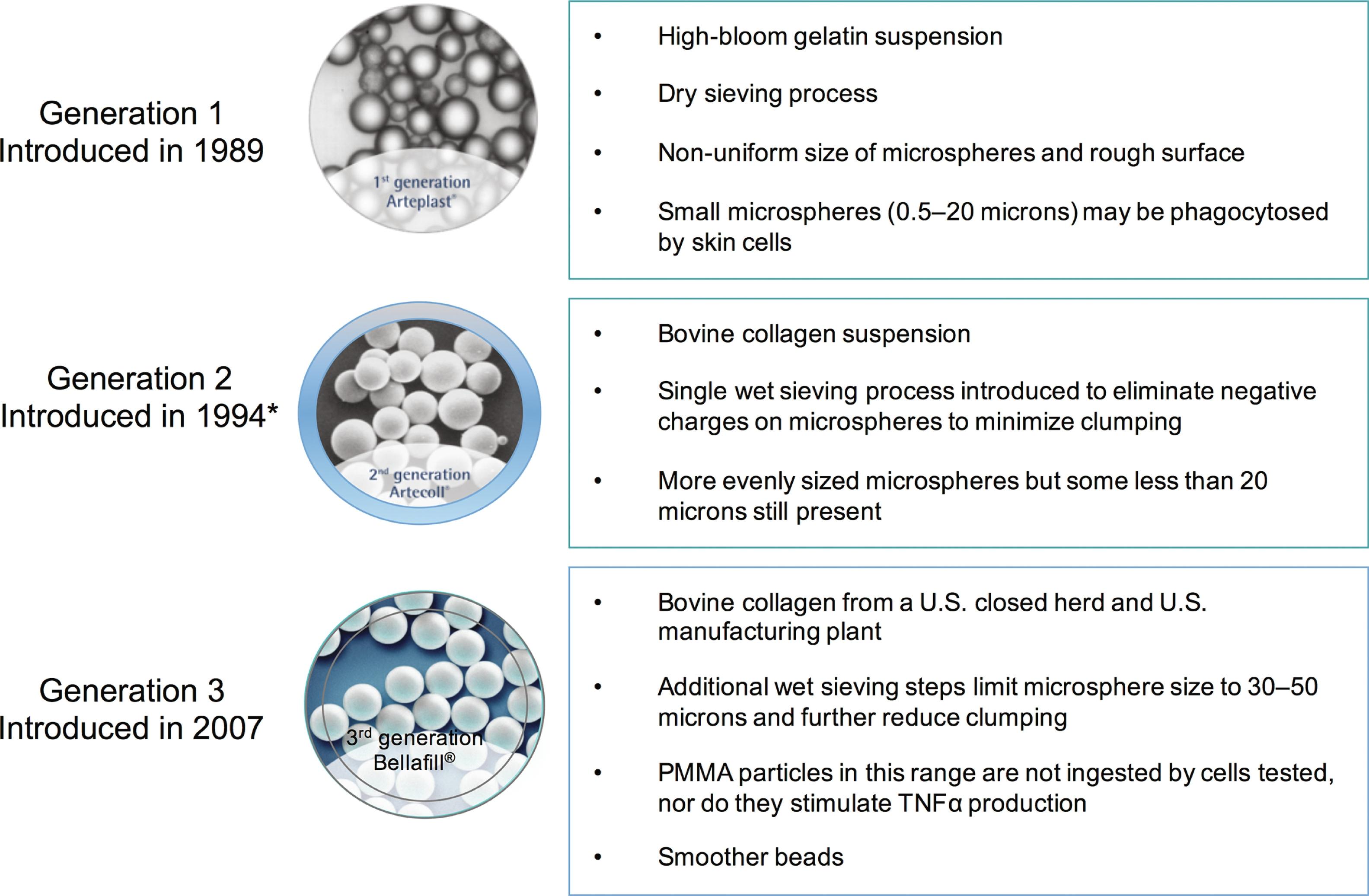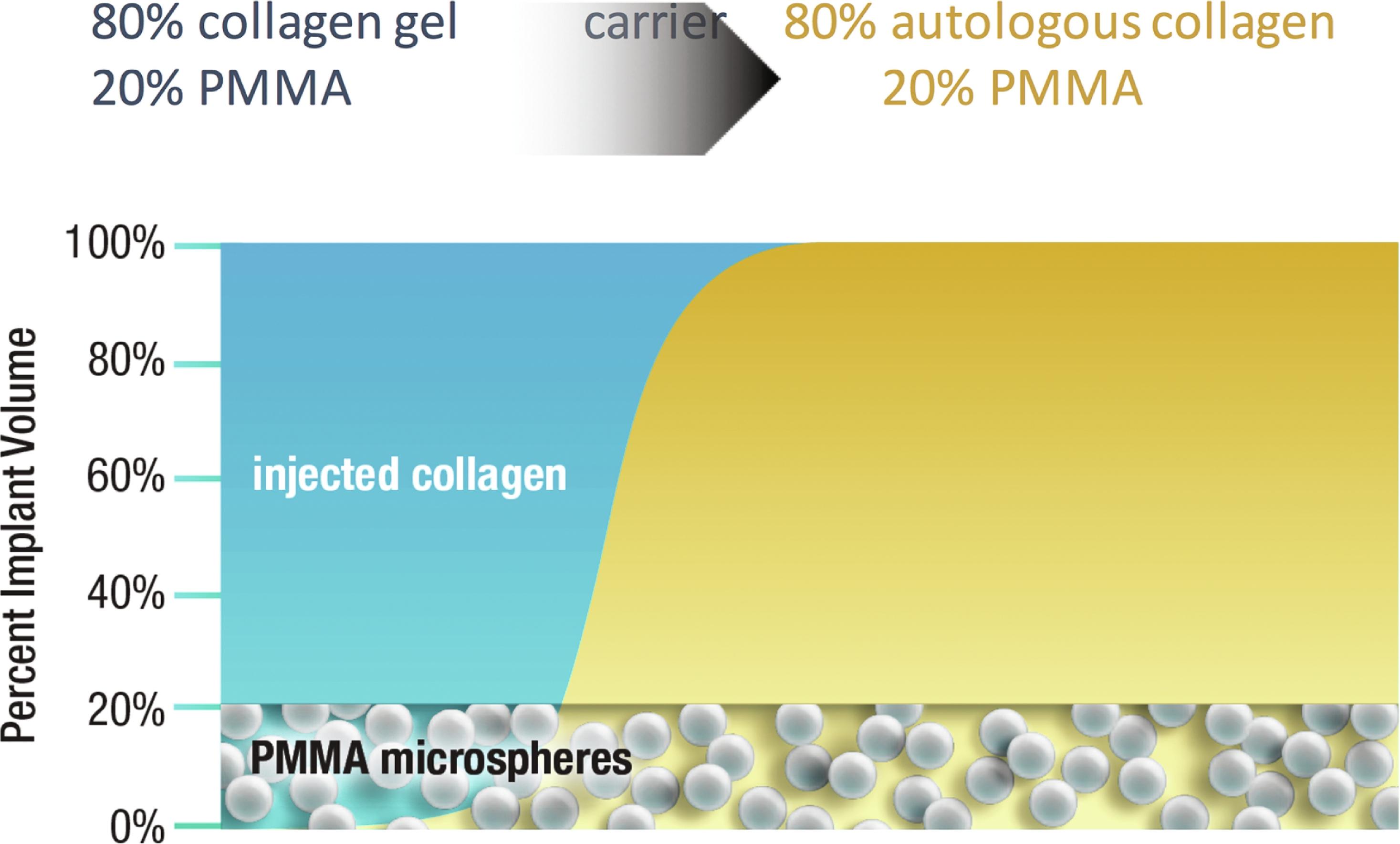Physical Address
304 North Cardinal St.
Dorchester Center, MA 02124
Bellafill is currently the only US Food and Drug Administration (FDA)-approved long-term filler indicated for the correction of the nasolabial folds and atrophic acne scars.
Bellafill is composed of smooth, round, and uniform microspheres (30–50 μm in diameter) of nonresorbable polymethylmethacrylate (PMMA).
The PMMA microspheres of Bellafill are suspended in a water-based bovine collagen gel with lidocaine
Bovine collagen is enzymatically cleaved at the ends to reduce immunogenicity.
Type I and type III collagen production from PMMA microsphere stimulation results in a durable outcome, studied for up to 5 years with a favorable safety profile.
Mindful patient selection, paired with skillful injection technique, makes Bellafill a desirable tool for optimizing long-term aesthetic outcomes.
Soft tissue fillers have become one of the most popular minimally invasive aesthetic procedures in the past several decades. Most available fillers are reabsorbed in entirety to promote safety at the expense of durability. Polymethylmethacrylate (PMMA) microspheres in a water-based collagen gel suspension, currently branded as Bellafill, is the only US Food and Drug Administration (FDA)-approved long-term filler for correction of nasolabial folds and atrophic acne scars. Prior to its use in aesthetics, PMMA has long been used in medicine, particularly in the fields of orthopedics and dentistry. Early formulations of PMMA had an unfavorable safety profile due to its allergic reactivity. PMMA formulations have since undergone considerable development and refinements to meet current clinical and safety standards ( Fig. 15.1 ). The first-generation product, called Arteplast (Arteplast, George Lemperle), was developed in the 1980s in Europe. This formulation consisted of small, rough PMMA particles of variable diameters suspended in gelatin, which allowed the microspheres to clump together and led to macrophage infiltration, particle phagocytosis, and subsequent inflammation. The second-generation product also developed in Europe, Artecoll (Artecoll, Rofil Medical), replaced gelatin with bovine collagen, which created a more consistent suspension of microspheres that were more refined but still variable in size with some rough surfaces. The addition of a wet sieving process eliminated some electrostatic charges to help minimize clumping. Bellafill, the third and latest generation of PMMA, previously called Artefill (Artefill, Artes Medical), is the result of 25 years of continuous scientific development to improve the safety and efficacy profile of PMMA. In Bellafill, the microspheres are small, consistent, and smooth. Seven wet sieving filters and an ultrasound bath remove negatively charged particles to eliminate clumping and create a uniform PMMA injectable filler safe for dermal injection.

Bellafill (previously branded as Artefill) is a nonbiodegradable injectable filler composed of 30 to 50 μm smooth, round PMMA microspheres (20% by volume) suspended in a water-based gel with bovine collagen and lidocaine. Bellafill has both an immediate and delayed mechanism of action ( Fig. 15.2 ). The collagen containing water-based gel that constitutes 80% of the syringe volume provides an immediate lift and volumizing effect and contains 3.5% bovine collagen gel and 0.3% lidocaine. Over time, the collagen gel is reabsorbed, leaving the PMMA microspheres in the remaining 20% of the syringe to act as a matrix to stimulate collagen production. Histologic analysis has shown that within days of injection, monocytes infiltrate the injection sites, differentiate into fibroblasts, and produce a fibrous capsule around the microspheres. Collagen fibers can be detected as early as 3 weeks posttreatment, as dermal remodeling and angiogenesis progress. Over the next weeks to months, collagen fibers will continue to increase in density and volume; and after 4 months, dermal remodeling is complete.

Become a Clinical Tree membership for Full access and enjoy Unlimited articles
If you are a member. Log in here